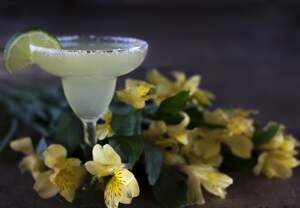

National Absinthe Day
Observed
annually on March 5th (since 2007)
Dates
Tags
Drugs & Alcohol
Food & Drink
Hashtags
Sources
https://isantemagazine.com/content/pernod-absinthe-celebrates-national-absinthe-day
https://parade.com/650776/solanahawkenson/its-national-absinthe-day-heres-how-to-enjoy-the-potent-green-drink/
https://pickledplum.com/absinthe/
https://www.holidailys.com/single-post/2017/03/05/National-Absinthe-Day
https://www.laspeakeasy.com/single-post/2018/03/05/National-Absinthe-Day
Absinthe, a light green alcoholic beverage, is shrouded in mystery on account of legends related to its history and its effects on the body, and because of its hard-to-pin-down flavor. We enjoy and get a clearer understanding of it today, on National Absinthe Day.
Absinthe is made of herbs, the most prominent being anise, fennel, and wormwood—usually grand wormwood—which contains thujone. Other herbs may be part of its makeup, and it may also contain sugar. It generally is bitter and has a strong taste of anise, and it has a high alcohol content, usually being between 45 and 74 percent alcohol by volume. It can be drunk straight up, be mixed in a cocktail, or be used in chocolates and ice cream sundaes, but the traditional way to drink it is with water and sugar. In this method, a process known as louching, a slotted spoon is put on a top of a glass, a sugar cube or two is set on it, water is poured over it, and the sugar is melted down into the absinthe, causing it to become cloudy and milky. The ratio of water to absinthe is usually 3:1 or 5:1. Some people light the sugar cubes on fire during the process, but this is not recommended.
A theory says that absinthe was invented in 1792 by Pierre Ordinaire, a French doctor, who created it to be used as a medical elixir. Shortly thereafter, Pernod Absinthe became the first commercial absinthe on the market. Absinthe became popular in Europe in the 1800s, particularly in France in the 1840s. Writers and artists were soon known to drink it. For example, French artists and American expatriates commonly drank it in Paris in the late nineteenth and early twentieth centuries. On account of its bad reputation, it was banned in America in 1912, and some European countries banned it around the same time, such as Belgium, Holland, Switzerland, and France. In response, much production ceased, some went underground, and some moved to Spain.
In 2007, the United States ruled that it was legal to manufacture, sell, and import absinthe, as long as the thujone level wasn't too high. This took place on March 5, the date on which we now celebrate National Absinthe Day. Various distilleries have since made their own unique version of the drink. Absinthe Verte from St. George Spirits in Alameda, California, and Lucid Absinthe were the first to manufacture the drink in the United States after it became legal. On March 5, 2013, Pernod Absinthe—which had been the first commercial absinthe centuries earlier—received approval for their label in the United States. With two important events related to absinthe connected to March 5, we have double the reason to drink it today!
How to Observe National Absinthe Day
Celebrate the day by drinking absinthe! Get yourself some absinthe, an absinthe glass, and an absinthe spoon, and louche the spirit, preparing it in its traditional way. Although you could also have it straight, this is not recommended, as it is very strong. Instead, it may be better enjoyed in a cocktail.
In the past, some events have been organized by companies that produce absinthe, Pernod Absinthe being one of them. Various bars hold events related to the spirit, and some famous bars and restaurants have served custom absinthe cocktails on the day. A good bet would be to stop at one of best absinthe bars in the United States. But if you don't feel like going out, you could enjoy absinthe at home. You could even make your own!




















